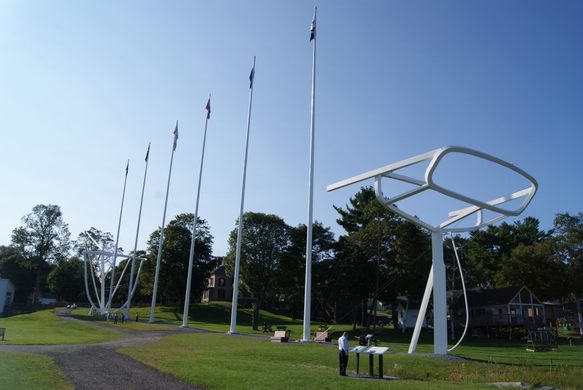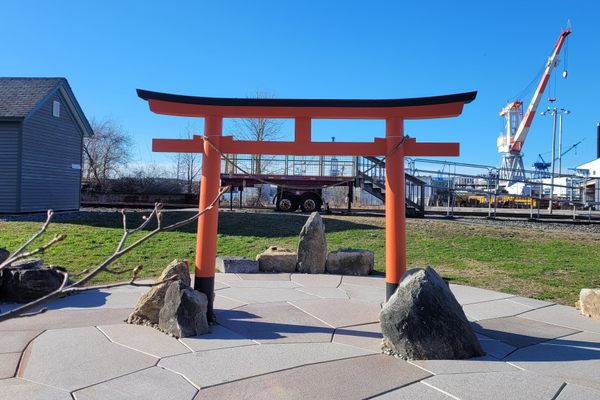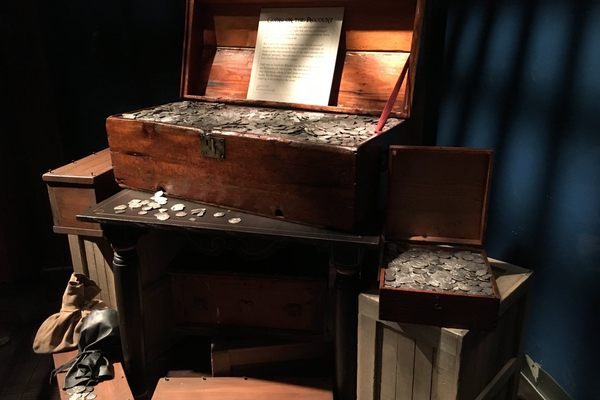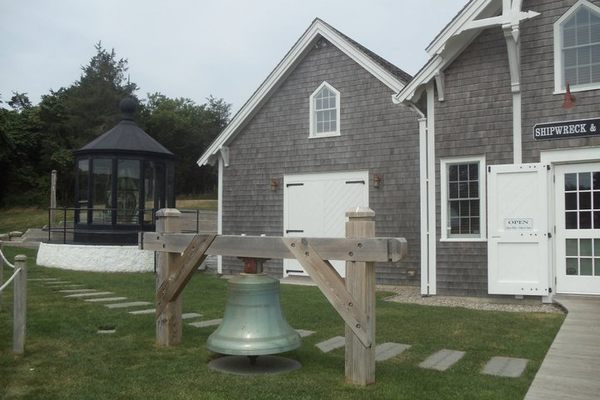AO Edited
Wyoming Sculpture
One of the largest wooden ships ever built is honored by a steel sculpture evoking her once-superlative scale.
With its dense forests, sandy coastlines, and deep-water bays, Bath, Maine, had a reputation for building world-class wooden ships by the 18th century. It’s no surprise then, that in 1909, the town produced one of the largest wooden ships ever built. Even today, her dimensions are dizzying: The 329-foot long, 50-foot wide Wyoming was powered by six masts—each 134 feet tall—which caught wind in 12,000 square feet of sail.
While she now rests on the ocean floor somewhere off Chatham, Massachusetts, a trip to Bath allows visitors today to behold at least the likeness of her once-superlative grandeur.
A steel sculpture situated on the Maine Maritime Museum campus accurately evokes Wyoming’s historic dimensions with a replicated bow and stern laid 329 feet across the very lawn on which the original was built and launched (six flag poles—each 134 feet tall—stand in for her masts). It’s an artful reimagining at once imposing and subtle. While the honorific sculpture effectively conjures the ship’s unthinkable scale, a look at her history and exploits are also unexpected.
Her name came from the fact that her principal investors were businesspeople and ranchers from the (ironically) landlocked state of Wyoming. Construction started at the (also ironically-named) Percy and Small shipyard in 1909. By the 1910s, the 6,000-ton vessel was hauling 6,000 tons of coal from the mines of Virginia to the northern port cities of Boston and Portland. She was so reliable in transporting cumbersome loads that in 1914 she was assigned to carry cargo to European shores at the outset of World War I.
In the spring of 1924, after resuming coal-transport duties along the Eastern seaboard, she succumbed to a vicious storm off the coast of Chatham, taking a 14-person crew down with her. A 25-year underwater hunt for her remains ended in 2003, when divers found them in a stretch of rough waters teeming with other historic shipwrecks.
Her monumental sculpture is one of the largest works of public art in all of New England. Along with 16,000 other artifacts and ephemera in the Maine Maritime Museum, she helps narrate the extraordinary nautical heritage of this long-famed shipbuilding region.




















Follow us on Twitter to get the latest on the world's hidden wonders.
Like us on Facebook to get the latest on the world's hidden wonders.
Follow us on Twitter Like us on Facebook